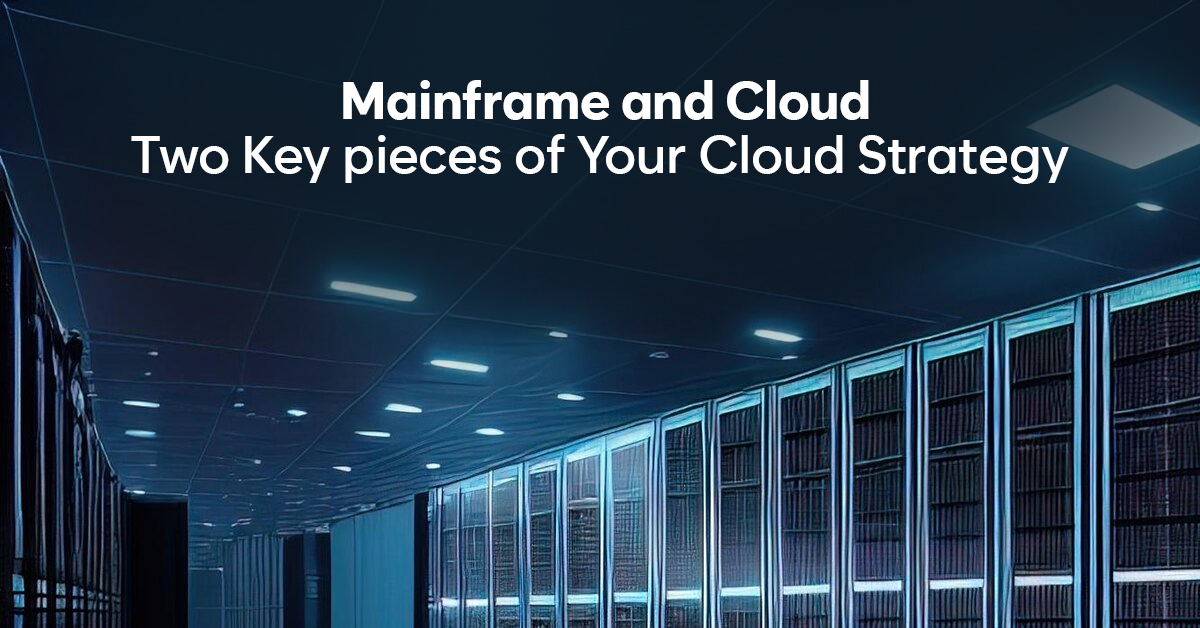In the ever-evolving landscape of technology, businesses are racing towards digital transformation, and cloud computing stands tall as a catalyst for the analytics that propels emerging technologies like artificial intelligence (AI) and machine learning (ML). However, the mainframe, with its robust security and reliability, continues to be the cornerstone for over 70% of Fortune 500 companies’ critical data.
Striking a balance between the agility of the cloud and the steadfastness of the mainframe is crucial for organizations seeking to modernize effectively. This blog explores the concept of a hybrid approach, blending both mainframe and cloud infrastructure for optimal results.
The Hybrid Approach: Ensuring No Data is Left Behind
Whether an organization is a small business or a corporate giant, mainframes are repositories of vast amounts of data and layers of technology built up over years. Attempting a complete migration to the cloud might risk losing data dispersed across various siloes within the organization.
A hybrid cloud strategy emerges as a solution, allowing businesses to optimize storage by selectively moving data better suited for the cloud while enhancing overall visibility and accessibility.
Maximizing Analytics Potential
Unleashing the full potential of internal data is a common goal for businesses, and cloud computing is the ideal vehicle for achieving this. Simultaneously, mainframes house valuable data capable of providing game-changing insights, offering organizations a competitive edge.
However, the challenge lies in extracting this data without compromising the security of the mainframe. The hybrid cloud strategy provides a compromise, enabling the seamless integration of cloud analytics tools and algorithms with data residing securely on the mainframe.
Cost-Effective Modernization
Cost considerations play a pivotal role in any decision to migrate to the cloud. While cloud computing can reduce operational costs, the migration process itself incurs expenses, particularly when dealing with decades-old technology stacks. Conversely, maintaining everything on the mainframe can lead to soaring workloads, intricate maintenance, and elevated operating costs.
Adopting a hybrid cloud approach allows businesses to move archival data from the mainframe to cost-effective cloud storage, ensuring efficient management. This strategy not only harnesses the power of data but also curtails maintenance costs and circumvents the pitfalls of expensive wholesale migration projects.
Modernization as a Spectrum, Not an Either-Or Dilemma
The dichotomy between the cloud and the mainframe need not be a binary choice. As digital transformation progresses, the technology supporting it must evolve in tandem. The hybrid cloud approach presents businesses, irrespective of their historical reliance on either the cloud or the mainframe, with a potent solution. It not only reduces costs but also optimizes workloads, providing access to cutting-edge analytical tools and capabilities such as AI and ML.
Conclusion: Embracing the Best of Both Worlds
In the quest for innovation and efficiency, businesses find themselves at the crossroads of tradition and progress. The hybrid cloud strategy emerges as a nuanced solution, preserving the reliability of mainframes while harnessing the dynamic capabilities of the cloud.
Also, It ensures that no data is left behind, maximizes analytics potential, and facilitates cost-effective modernization. As organizations navigate the digital landscape, the fusion of mainframe and cloud becomes not just a strategy but a necessity to stay competitive and future-ready.




